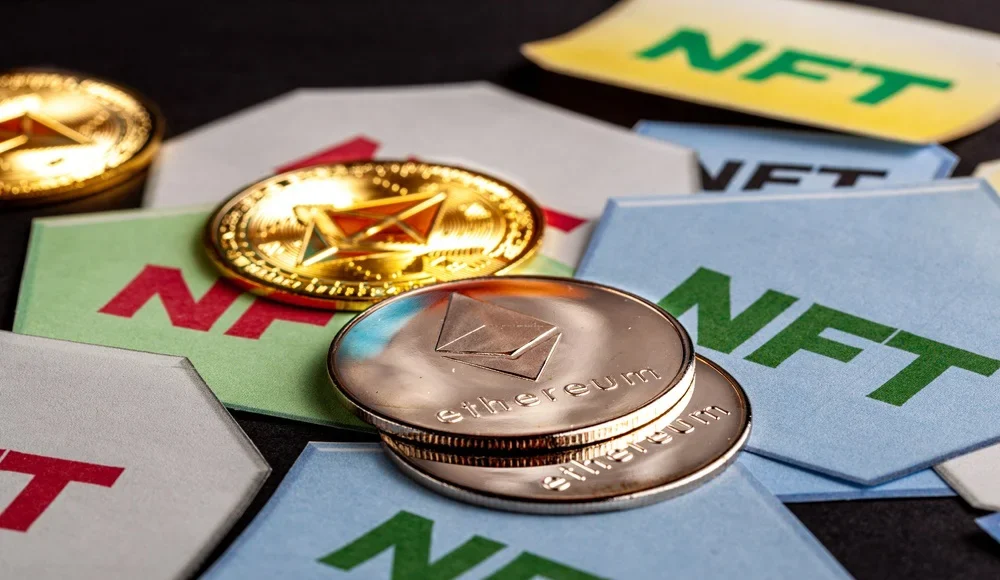In the dynamic landscape of blockchain and cryptocurrency, stability is a coveted trait. As the popularity of Non-Fungible Tokens (NFTs) continues to soar, the need for a reliable and secure medium of exchange becomes paramount. This is where stablecoins step in, providing a foundation for NFT transactions that ensures both stability and efficiency.
NFT Transactions
In this blog post, the cryptoarenanews explores the pivotal role of stablecoins in NFT transactions, shedding light on their significance and impact on the evolving crypto ecosystem.
Understanding Stablecoins:
Before delving into the intricate relationship between stablecoins and NFTs, it’s crucial to comprehend what stablecoins are. Stablecoins are a type of cryptocurrency designed to minimize the volatility commonly associated with traditional cryptocurrencies like Bitcoin and Ethereum. They achieve this by pegging their value to a stable asset, such as a fiat currency (USD, EUR), commodities, or even other cryptocurrencies.
The Stability Advantage in NFT Transactions
NFTs, as unique and indivisible tokens representing ownership of digital or physical assets, have garnered immense attention in various industries, including art, gaming, and real estate. However, the inherent volatility of many cryptocurrencies can pose a challenge for seamless NFT transactions. This is where stablecoins come into play, offering a reliable bridge between the traditional and crypto worlds.
Price Consistency:
Stablecoins ensure a consistent value, shielding both buyers and sellers from the price fluctuations that can occur during the transaction process. This stability promotes confidence and predictability in NFT transactions, essential elements for fostering trust in the burgeoning NFT market.
Facilitating Transactions:
NFT transactions often involve cross-border payments, and stablecoins simplify this process. By pegging their value to fiat currencies, stablecoins eliminate the need for complicated currency conversions, reducing transaction costs and time delays.
Smart Contracts and Automation:
The programmable nature of stablecoins aligns seamlessly with smart contracts, the backbone of many NFT transactions. Smart contracts, powered by stablecoins, automate the execution of predefined conditions, ensuring a secure and efficient transfer of NFT ownership.
Marketplace Integration:
Stablecoins provide a stable unit of account for NFT marketplaces, making it easier for users to evaluate and compare the value of different assets. This simplification encourages broader adoption of NFTs across various platforms.
The Human Side of Stablecoin-NFT Collaboration
Beyond the technicalities, it’s essential to recognize the human side of the stablecoin-NFT collaboration. As artists, collectors, investors, and everyday users engage with this technology, the interface between stablecoins and NFTs becomes a bridge connecting diverse communities. Let’s explore the human aspects that contribute to the success of this collaboration.
Inclusivity in the Arts:
The marriage of stablecoins and NFTs has democratized the art world. Artists from various backgrounds now have the opportunity to tokenize their creations, reaching a global audience without the barriers imposed by traditional art markets. Stablecoins ensure that the value of their work is consistent and accessible to a broad spectrum of art enthusiasts.
Financial Accessibility:
Stablecoins provide a stable and reliable medium for users to engage in NFT transactions without being exposed to the wild price swings associated with other cryptocurrencies. This financial accessibility is a critical factor in attracting a more diverse user base, fostering inclusivity and broadening the scope of NFT adoption.
Community Empowerment:
Stablecoins empower communities by providing them with a secure means of conducting transactions within decentralized ecosystems. This is particularly evident in blockchain-based games and virtual worlds, where stablecoins ensure that in-game economies remain stable and fair for all participants.
Global Collaboration:
The cross-border nature of stablecoin transactions enhances global collaboration. Artists can collaborate with collectors and investors from different parts of the world seamlessly, fostering a borderless ecosystem for the exchange of ideas and creativity.
Case Studies: Real-world Applications of Stablecoins in NFTs
Art Marketplaces:
Leading NFT art marketplaces have integrated stablecoins to facilitate secure and straightforward transactions. Artists and collectors benefit from the stability, while buyers from different parts of the world appreciate the universal value representation provided by stablecoins.
Gaming Industry:
In the gaming sector, where in-game assets are tokenized as NFTs, stablecoins play a pivotal role. They ensure a consistent value for these assets, creating a reliable virtual economy within games.
Real Estate Tokenization:
Stablecoins are instrumental in the emerging trend of tokenizing real estate assets as NFTs. This facilitates fractional ownership and makes real estate investment more accessible globally.
Stablecoin Development Company: A Catalyst for Progress
Behind the scenes of the stablecoin-NFT synergy are innovative companies dedicated to developing and advancing stablecoin technologies. A stablecoin development company plays a crucial role in creating and maintaining stablecoin ecosystems, contributing to the overall stability and growth of the crypto market.
Security Measures:
These companies implement robust security measures to safeguard stablecoin transactions, addressing concerns related to fraud and unauthorized access.
Blockchain Integration:
Seamless integration with blockchain networks is paramount. Stablecoin development companies ensure that their products are compatible with various blockchain platforms, enhancing interoperability and accessibility.
Regulatory Compliance:
Adherence to regulatory standards is vital for the widespread adoption of stablecoins. Development companies actively engage with regulatory bodies to ensure compliance, fostering trust and legitimacy.
Conclusion:
In the evolving landscape of blockchain and cryptocurrency, stablecoins emerge as a stabilizing force, particularly in the realm of NFT transactions. Their role in ensuring price consistency, facilitating cross-border transactions, integrating with smart contracts, and supporting various industries showcases their versatility and importance.
As the NFT market continues to mature, stablecoins will remain a cornerstone, providing the stability necessary for sustained growth and widespread adoption. In collaboration with innovative stablecoin development companies, this symbiotic relationship promises a future where NFT transactions are secure, seamless, and globally accessible.

















